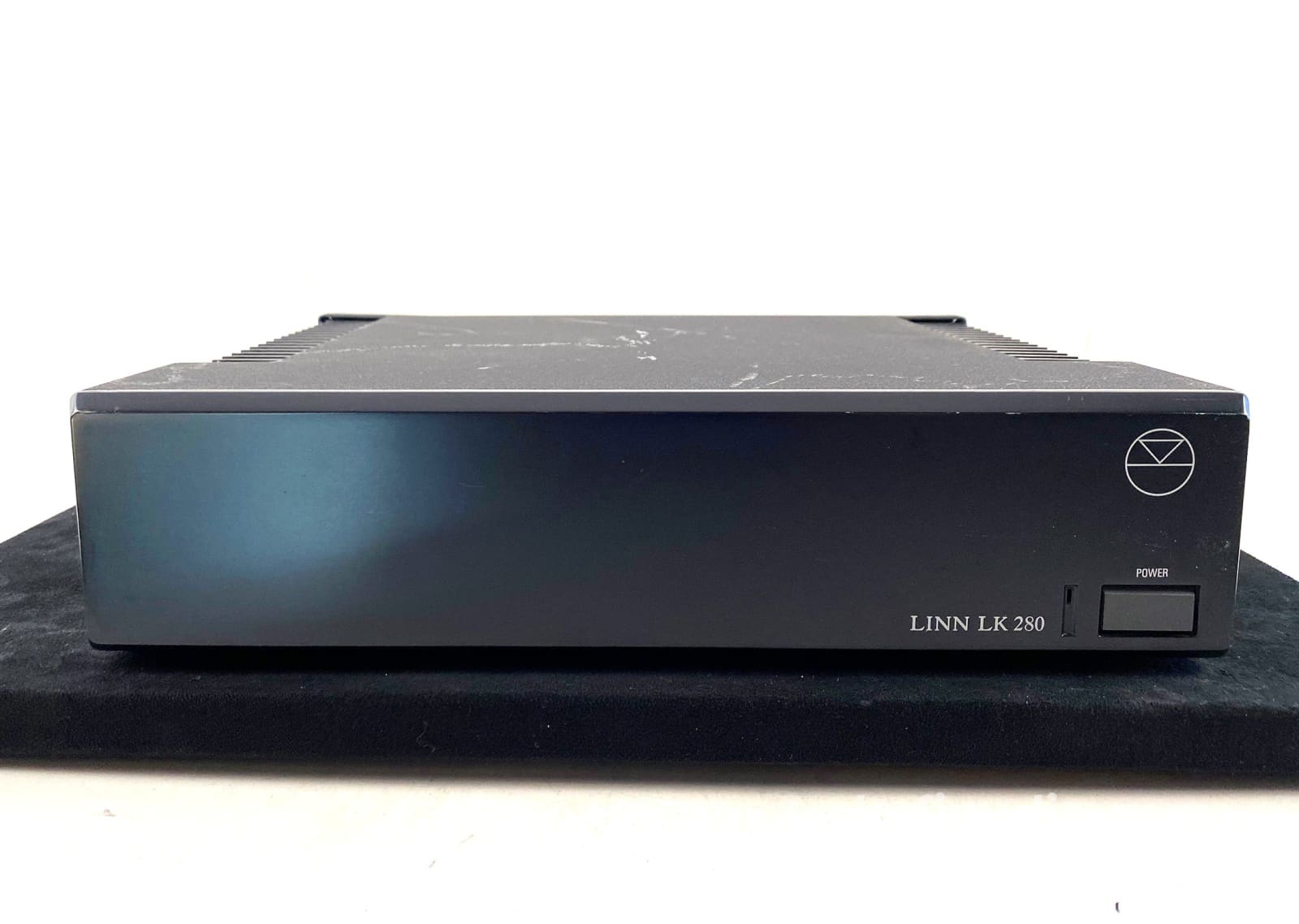
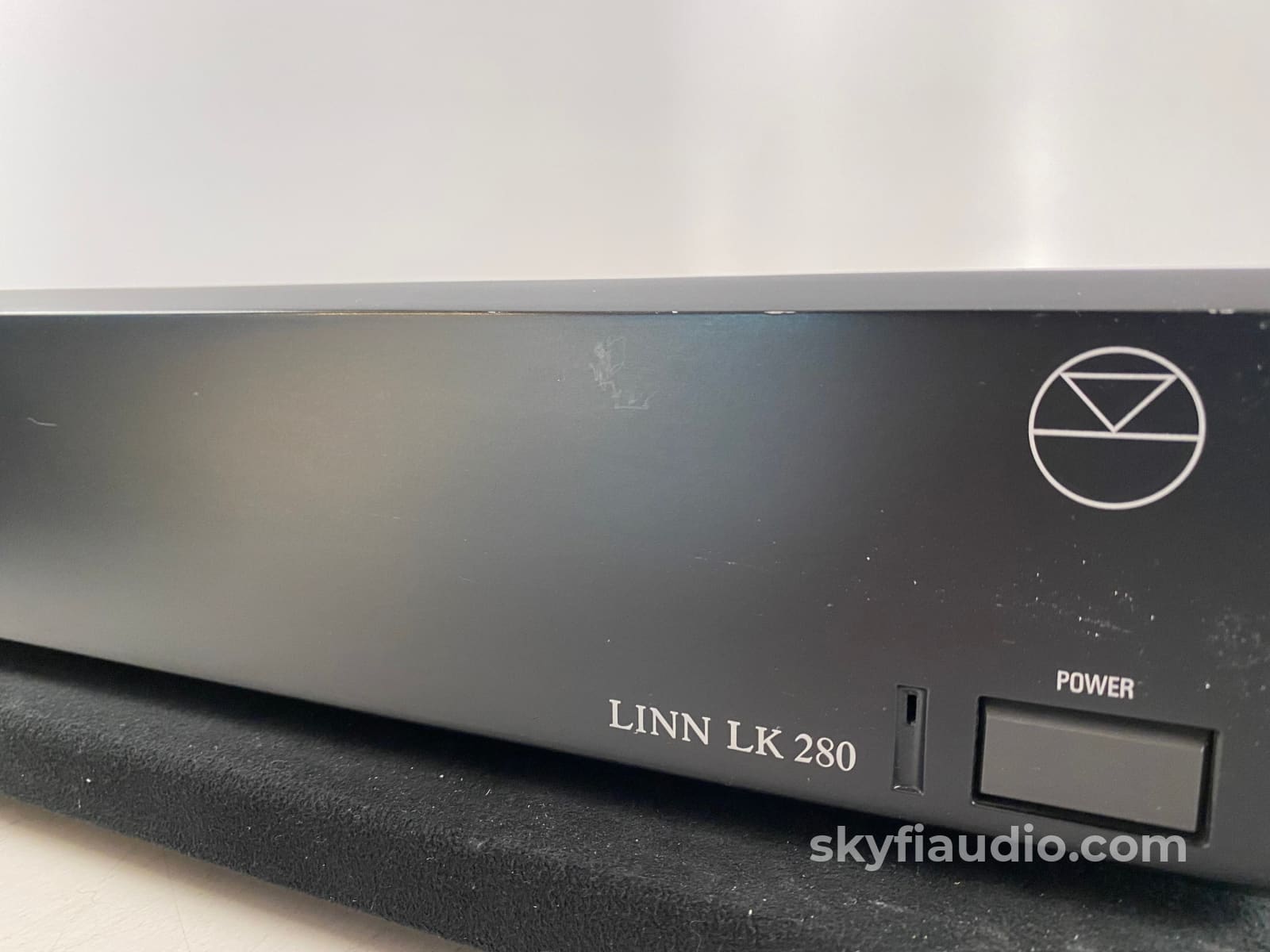
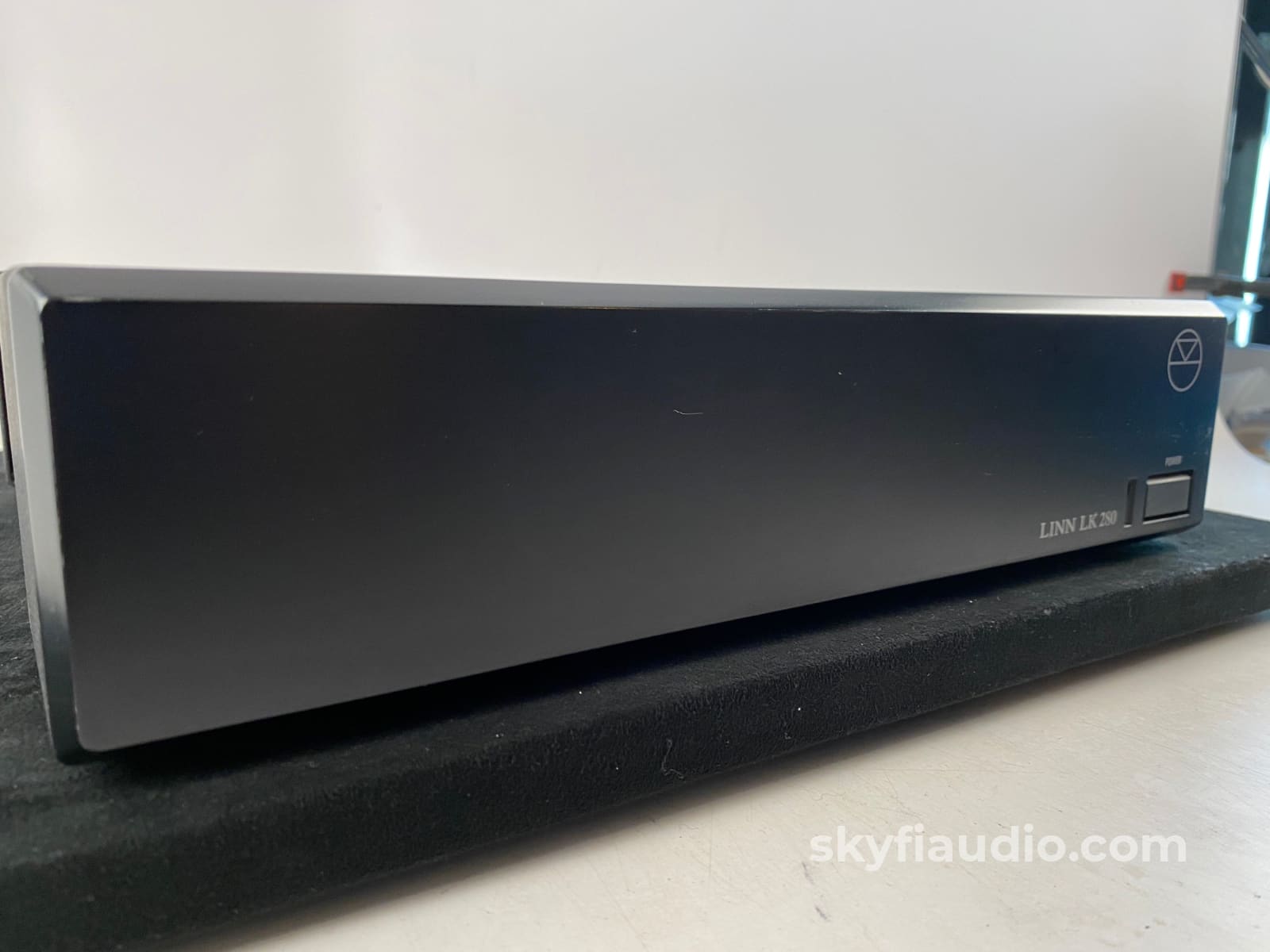
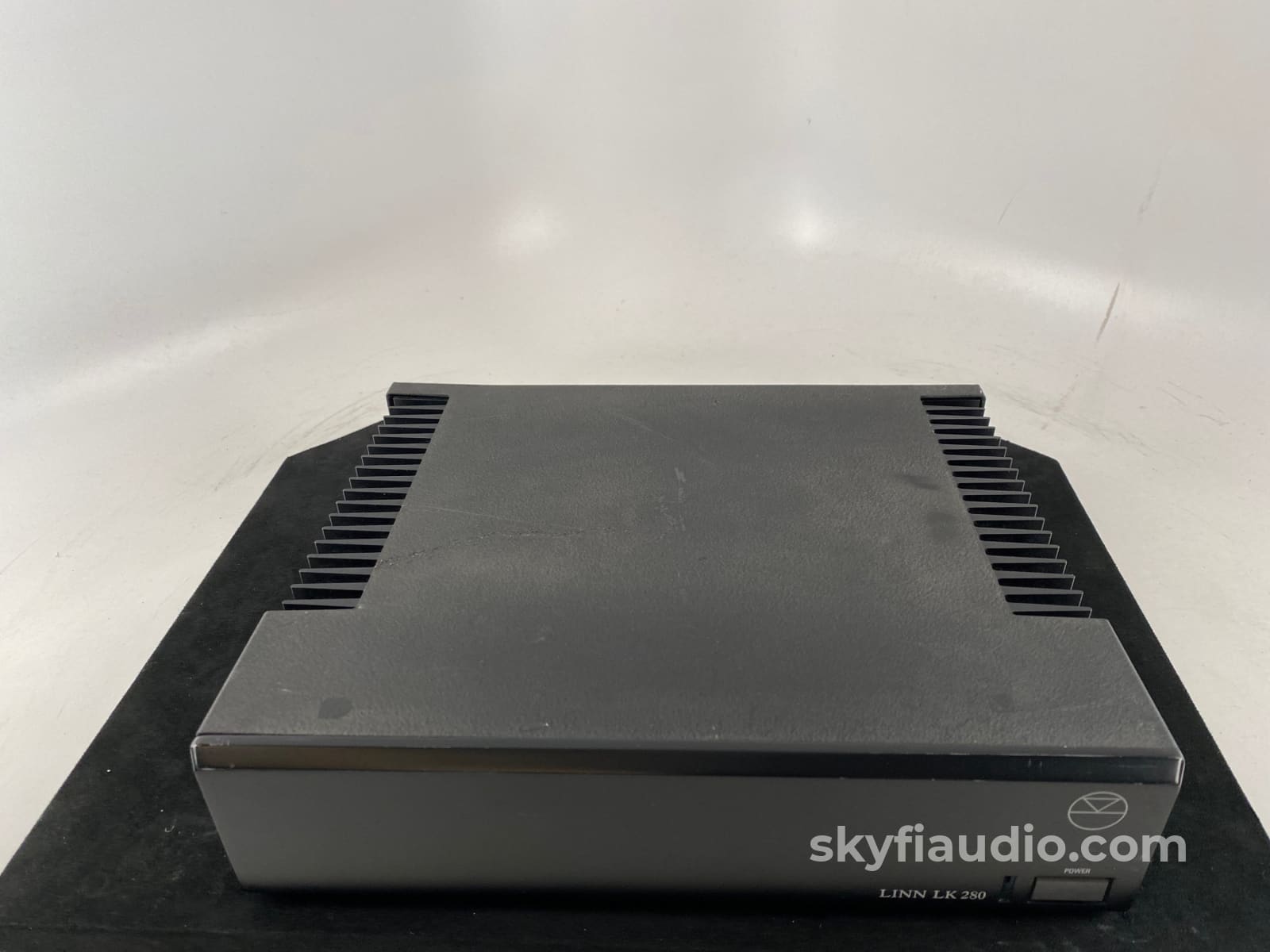
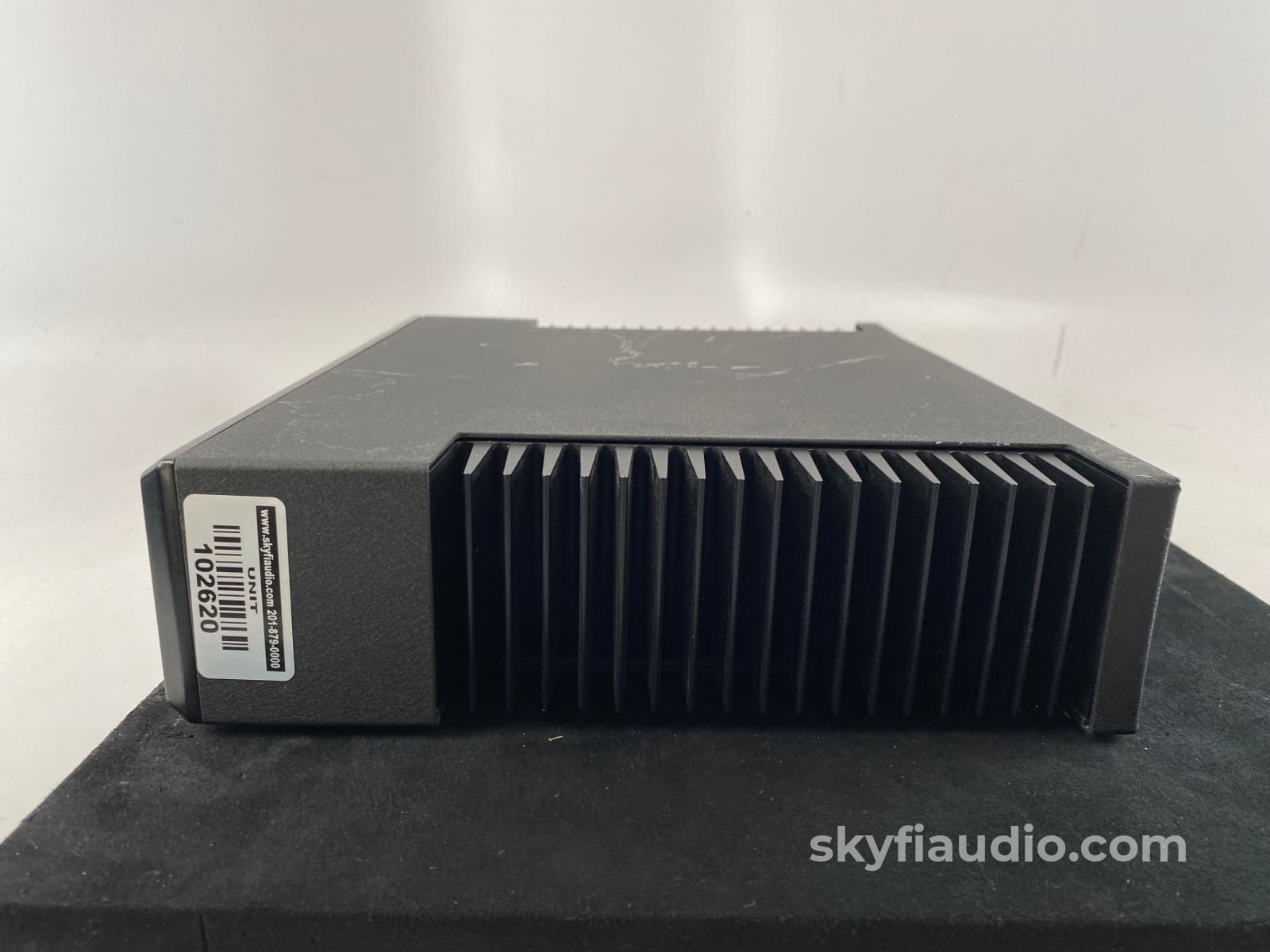
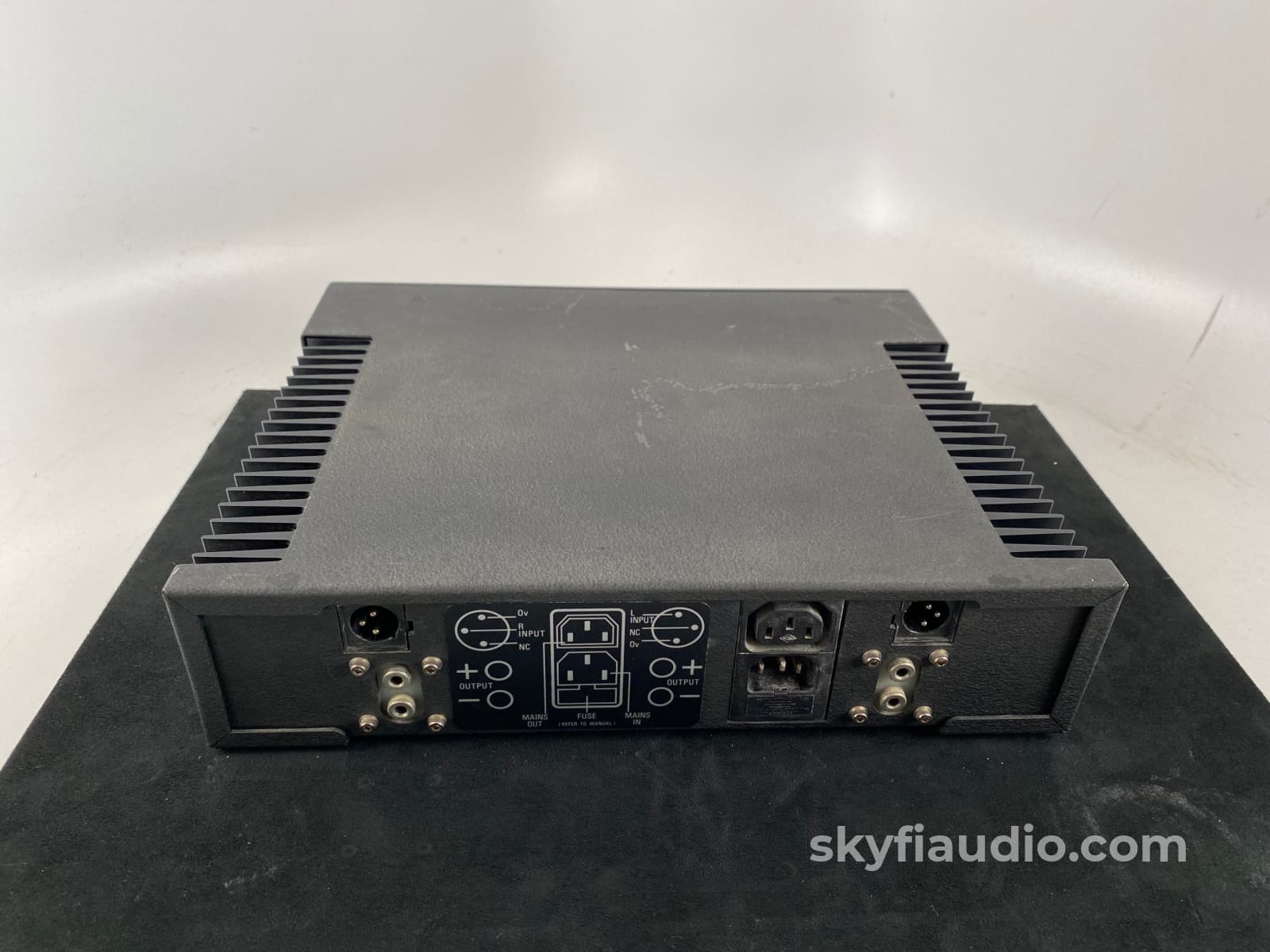
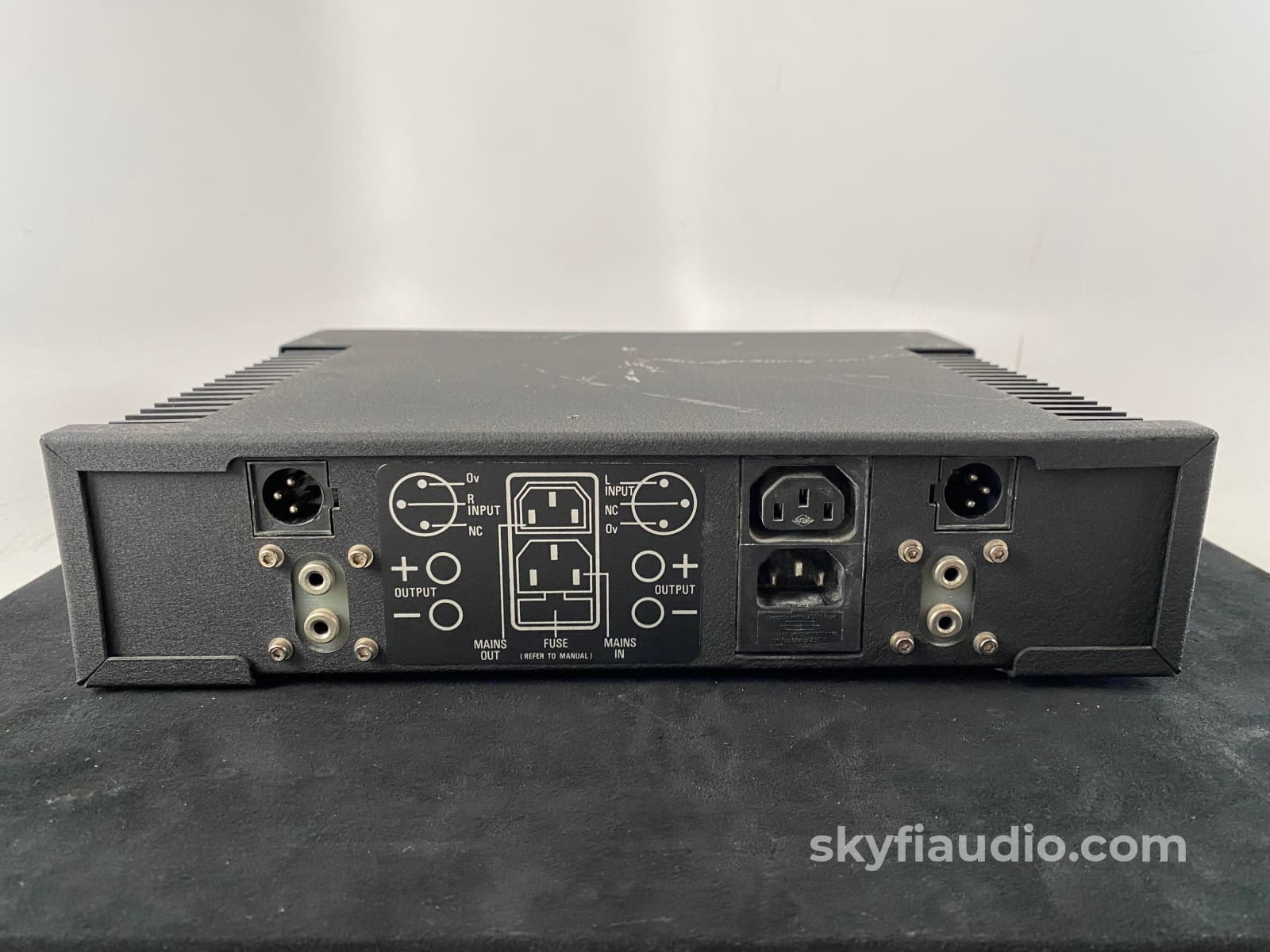
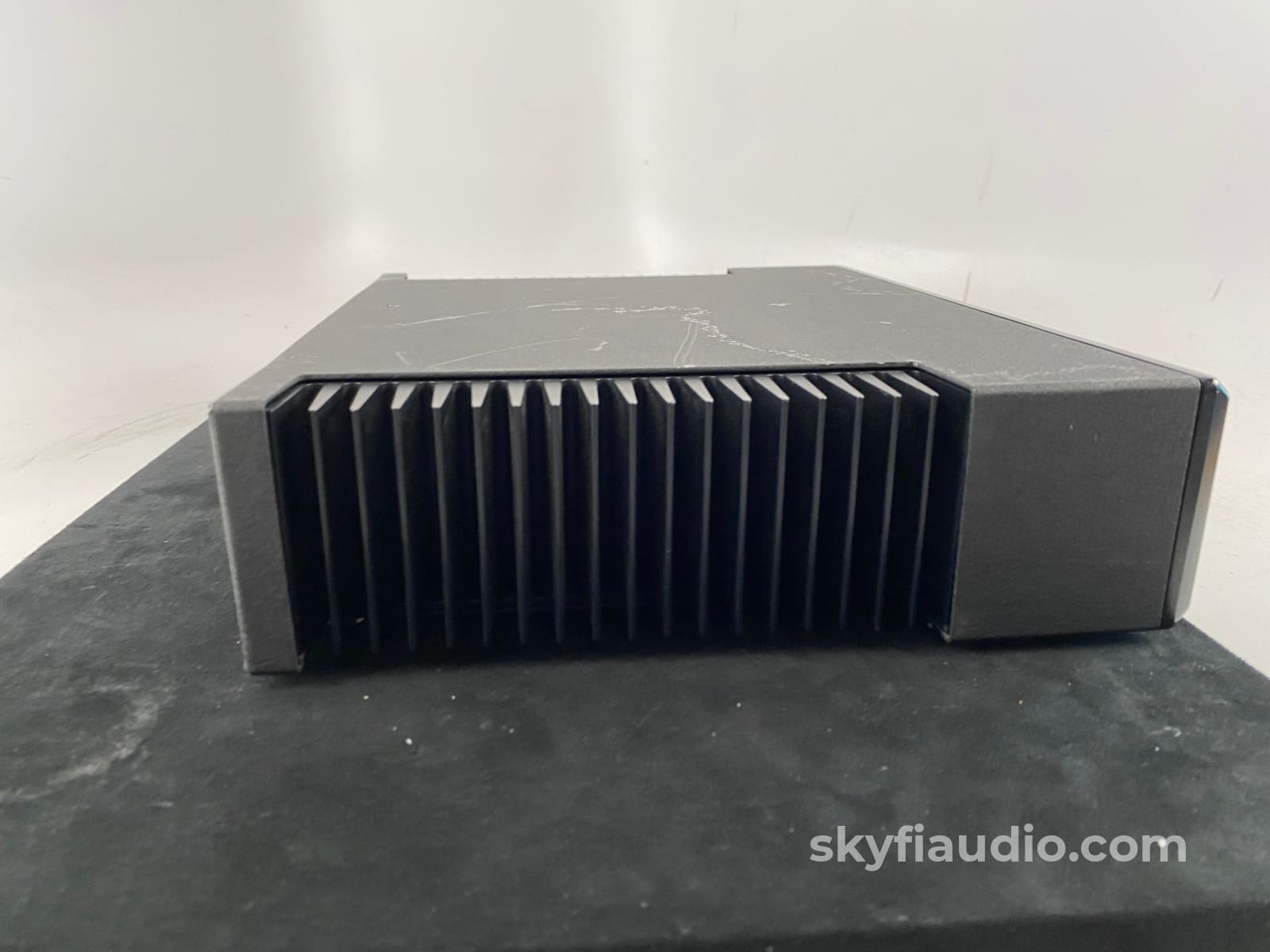
Linn LK280 Stereo Power Amplifier - Dual Mono Construction
Free Shipping on Most Electronics - Excludes Speakers and Items Requiring Freight - Contiguous U.S. Only
Pickup currently unavailable at SkyFi 479

Linn LK280 Stereo Power Amplifier - Dual Mono Construction
SkyFi 479
479 South Broad Street
Glen Rock NJ 07452
United States
Tested in our listening room with a full Linn system, working and sounding great.
We also have the matching LK1 preamp available here.
We can supply proper cables if needed, please reach out before placing your order to confirm your system setup.
Otherwise your purchase includes the Linn LK280 amplifier as pictured and a power cable.
Click below to add our recommended matching cables from Kimber Kable, all brand new as SkyFi is an official Kimber dealer.
Kimber Kable - XLR Interconnects
From Stereophile:
The LK280
The LK280 is a more powerful development of Linn's original LK2 power amplifier. Of similar height and depth to the LK1, it is wider. The only control is a power on/off switch on the right of the front panel.
Construction is totally dual-mono, apart from the centrally sited toroidal power transformer, and even that has dual secondaries, one for each channel.
Complete left and right channels of the amplifier—diode bridge, twin reservoir capacitors, voltage regulators, output transistors, heatsink, and input circuitry (everything except the output sockets)—are each carried on an individual vertically mounted pcb running the full depth of the chassis.
The rear panel carries a 3-pin male XLR socket at each end, these the same as featured in the LK1 and mounted directly on the pcb. One has pin 2 connected to define that channel as "left," the other pin 3 connected for "right." Two input leads are therefore required.
The outputs are taken from 4mm sockets, these taking only banana plugs—they are spaced too close to take dual bananas—and are very tight-fitting with conventional plugs.
A heavy internal wire connects the negative terminal to the junction of the two reservoir caps, while the positive terminal is connected to the two flat-pack output transistors with another heavy piece of wire. The series-pass voltage-regulator transistors appear identical to the output transistors and are in intimate thermal contact with them.
Conclusion
Exquisitely made but unusually styled, Linn's LK1 and LK280 can be used as stand-alone pre- and power amplifiers.
I imagine, however, that they will almost always be used as a pair, due to the idiosyncratic XLR connectors, the '280's low input impedance, and, last but not least, the fact that they do appear to form a musically synergistic partnership.
As Len Feldman said in the April 1989 Audio, perhaps the LK1 and LK280 should be regarded as a two-chassis integrated amplifier.
Linn LK280: Solid-state stereo power amplifier. Output power: 80Wpc into 8 ohms, 160Wpc into 4 ohms (conditions not specified), both 19.0dBW. Voltage gain: 26dB. Input impedance: 3k ohms. S/N Ratio: not specified. Slew factor: not specified. Polarity: non-inverting.
Dimensions: 12.6" (320mm) W by 10.43" (265mm) D by 2.95" (75mm) H. Weight: 19.8 lbs (9kg).
The SkyFi Testing Process for Solid State Amplifiers:
We start with a visual inspection of all internal components to make sure there are no signs of stress or aging. Capacitors are checked for telltale sings of bulging or leaking, resistors are checked for signs of overheating or cracking, and transistors are checked for signs of stress or damage.
We then power up the unit carefully and run a simple 1k sine wave while monitoring the output on an oscilloscope for signs of distortion or noise. Finally, we run the amplifier to its full rated power into the appropriate resistive load provided by our Sencore amplifier tester. If there is an issue, it will usually be noticeable at this point. If everything reads clean, we will often test for THD (Total Harmonic Distortion) measured by our Keithley distortion meter, and compare it against the original manufacturers specifications. The amplifier then remains powered on to "burn in" on our test bench for a few hours to make sure there are no heat related issues. If there are balanced inputs available they will be also be tested.
Final testing involves pushing actual music thorough the amplifier. We've learned over time that some issues are only noticeable to a trained ear while listening to familiar source material. Our test bench has reference vintage KEF speakers that we're very familiar with which quickly reveal any discrepancies. Some amplifiers will then move into our listening room where they are tested with our in-house reference speakers of choice.
|
Item |
Included |
|
Original Box |
Not Included |
|
Manual |
Not Included |
|
Remote |
Not Applicable |
|
Cables |
Yes - Power Only |
|
Physical Condition |
7 |
|
Working Condition |
10 |
Choose options








